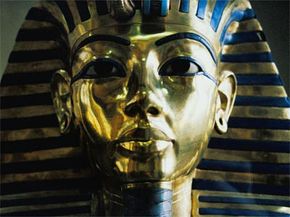History of Gold: Flashy Coffins and Ancient Egypt
When most people think of prehistoric humans transitioning from the Stone Age to the Bronze Age, they picture a movement from stone tools to tools made from copper or copper combined with tin. But in some regions of the world, early humans may have worked gold before other metals. For example, in Bulgaria, archaeologists have found decorative gold objects dating to about 4000 B.C. Most civilizations in North Africa, Asia and Europe transitioned out of the Stone Age between 6000 B.C. and 2500 B.C., so gold was certainly embraced by humans early in their development.
There's no doubt that ancient Egyptians had a voracious appetite for gold. Descriptions of the metal appeared in hieroglyphs as early as 2600 B.C. By 1500 B.C., gold had become the recognized medium of exchange for international trade. The source of this gold was Nubia, or Kush, a sub-Saharan empire located on the Nile south of Egypt. Pharaohs sent expeditions to Nubia to mine the quartz lodes for gold, which Egyptian goldsmiths transformed into vessels, furniture, funerary equipment and sophisticated jewelry.
Advertisement
By 550 B.C., the Greeks had started mining the Mediterranean and Middle East for gold. The Romans continued the practice, introducing sophisticated techniques, such as hydraulic mining, or hushing, which involved using large volumes of water to dislodge rock and remove debris. They also minted coins on a scale never before seen, producing millions of gold aureus coins, each stamped with the emperor's head, between A.D. 200 and 400.
At about the same time, South American civilizations were making great headway with gold metalworking. People of the Middle Sicán era (A.D. 900 to 1100), living in present-day Peru, produced enormous quantities of precious metal artifacts. Their goldsmiths specialized in using sheet metal created by hammering gold ingots with stone hammers on stone anvils. The result was a startling array of gold ornaments, masks, headdresses and other objects.
These are the kinds of treasures Europeans were hungry to find when they began to explore the world to their west. Up next, we'll see how lust for gold helped to shape the fortune of empires and ordinary men.
